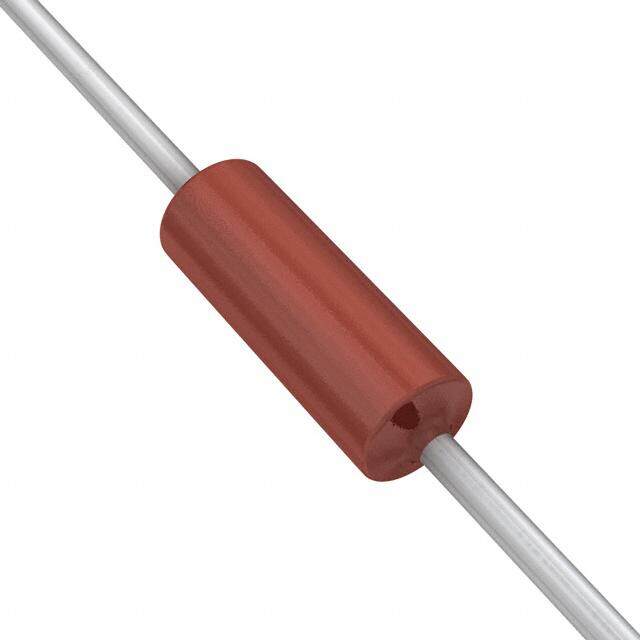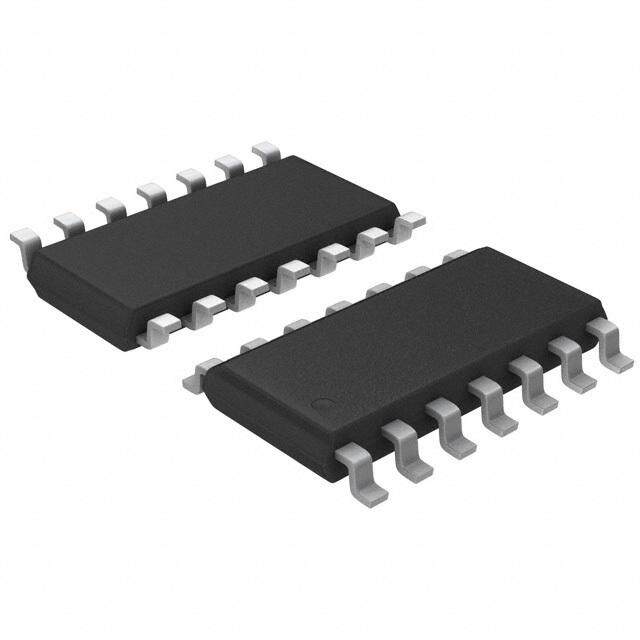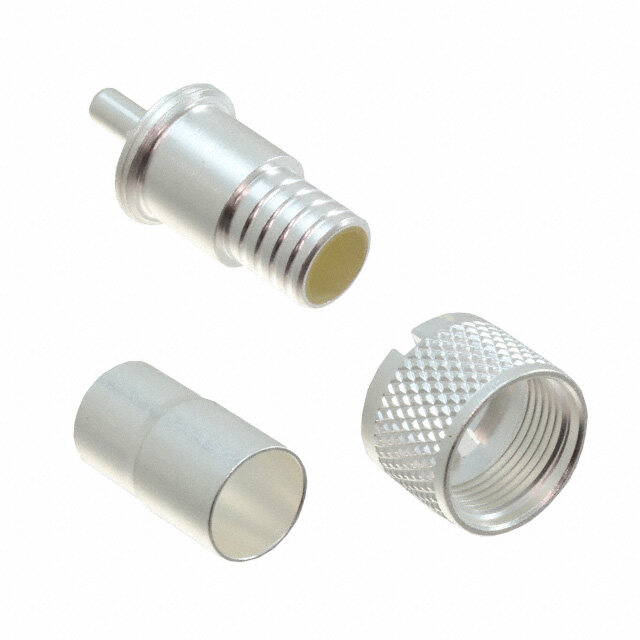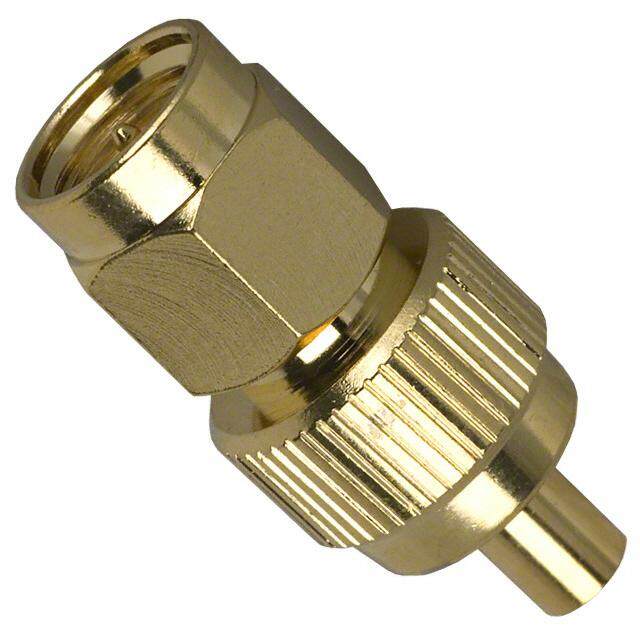ICGOO在线商城 > FOD8012
- 型号: FOD8012
- 制造商: Fairchild Semiconductor
- 库位|库存: xxxx|xxxx
- 要求:
| 数量阶梯 | 香港交货 | 国内含税 |
| +xxxx | $xxxx | ¥xxxx |
查看当月历史价格
查看今年历史价格
FOD8012产品简介:
ICGOO电子元器件商城为您提供FOD8012由Fairchild Semiconductor设计生产,在icgoo商城现货销售,并且可以通过原厂、代理商等渠道进行代购。 提供FOD8012价格参考¥询价-¥询价以及Fairchild SemiconductorFOD8012封装/规格参数等产品信息。 你可以下载FOD8012参考资料、Datasheet数据手册功能说明书, 资料中有FOD8012详细功能的应用电路图电压和使用方法及教程。
| 参数 | 数值 |
| 产品目录 | |
| 描述 | OPTOCOUPLER BIDIR 3.3V 5V 8SOIC逻辑输出光电耦合器 High CMR Bi-Direct. Logic Gte Optocouplr |
| 产品分类 | |
| 品牌 | Fairchild Semiconductor |
| 产品手册 | |
| 产品图片 |
|
| rohs | 符合RoHS无铅 / 符合限制有害物质指令(RoHS)规范要求 |
| 产品系列 | 光耦合器/光电耦合器,逻辑输出光电耦合器,Fairchild Semiconductor FOD8012- |
| 数据手册 | |
| 产品型号 | FOD8012 |
| 上升/下降时间(典型值) | 6.5ns, 6.5ns |
| 上升时间 | 1 ms |
| 下降时间 | 1 ms |
| 产品种类 | 逻辑输出光电耦合器 |
| 传播延迟tpLH/tpHL(最大值) | 60ns, 60ns |
| 供应商器件封装 | 8-SO |
| 共模瞬态抗扰度(最小值) | 20kV/µs |
| 包装 | 管件 |
| 单位重量 | 252 mg |
| 商标 | Fairchild Semiconductor |
| 安装类型 | 表面贴装 |
| 封装 | Bulk |
| 封装/外壳 | 8-SOIC(0.154",3.90mm 宽) |
| 封装/箱体 | SOIC-8 |
| 工作温度 | -40°C ~ 110°C |
| 工厂包装数量 | 3000 |
| 数据速率 | 15Mbps |
| 最大传播延迟时间 | 60 ns |
| 最大功率耗散 | 60 mW |
| 最大工作温度 | + 110 C |
| 最大正向二极管电压 | 5.5 V |
| 最大正向二极管电流 | 10 uA |
| 最小工作温度 | - 40 C |
| 最小正向二极管电压 | 3 V |
| 标准包装 | 3,000 |
| 特色产品 | http://www.digikey.cn/product-highlights/cn/zh/fairchild-cloud-systems-computing/4301 |
| 电压-正向(Vf)(典型值) | - |
| 电压-电源 | 3 V ~ 3.6 V,4.5 V ~ 5.5 V |
| 电压-隔离 | 3750Vrms |
| 电流-DC正向(If) | - |
| 电流-输出/通道 | 10mA |
| 系列 | FOD8012 |
| 绝缘电压 | 3750 Vrms |
| 输入-输入侧1/输入侧2 | 1/1 |
| 输入类型 | 逻辑 |
| 输出类型 | 推挽式/图腾柱 |
| 通道数 | 2 |



.jpg)





- 商务部:美国ITC正式对集成电路等产品启动337调查
- 曝三星4nm工艺存在良率问题 高通将骁龙8 Gen1或转产台积电
- 太阳诱电将投资9.5亿元在常州建新厂生产MLCC 预计2023年完工
- 英特尔发布欧洲新工厂建设计划 深化IDM 2.0 战略
- 台积电先进制程称霸业界 有大客户加持明年业绩稳了
- 达到5530亿美元!SIA预计今年全球半导体销售额将创下新高
- 英特尔拟将自动驾驶子公司Mobileye上市 估值或超500亿美元
- 三星加码芯片和SET,合并消费电子和移动部门,撤换高东真等 CEO
- 三星电子宣布重大人事变动 还合并消费电子和移动部门
- 海关总署:前11个月进口集成电路产品价值2.52万亿元 增长14.8%





PDF Datasheet 数据手册内容提取
User Guide for FEBFOD8012_CAN Evaluation Board Bi-Directional Logic Gate Optocoupler Provides Proven and Reliable Isolation to the Control Access Network (CAN) Interface Featured Fairchild Product: FOD8012 Direct questions or comments about this evaluation board to: “Worldwide Direct Support” Fairchild Semiconductor.com © 2012 Fairchild Semiconductor Corporation FEBFOD8012_CAN • Rev. 1.0.0
Table of Contents 1. Introduction ............................................................................................................................... 3 1.1. Description ....................................................................................................................... 3 2. Photographs............................................................................................................................... 4 3. Printed Circuit Board ................................................................................................................ 4 3.1. Board Setup and Operation .............................................................................................. 5 3.2. Test Procedures and Conditions ....................................................................................... 5 4. Schematic .................................................................................................................................. 6 5. Scope Shots ............................................................................................................................... 7 6. Conclusion ................................................................................................................................ 8 7. Revision History ....................................................................................................................... 9 © 2012 Fairchild Semiconductor Corporation 2 FEBFOD8012_CAN • Rev. 1.0.0
This user guide supports the evaluation board for the FOD8012. It should be used in conjunction with the FOD8012 datasheet as well as Fairchild’s application notes and technical support team. Please visit Fairchild’s website at www.fairchildsemi.com. 1. Introduction The FOD8012 is an industry-first, full-duplex, bi-directional, logic-gate optocoupler with high noise immunity as well as proven and reliable optical isolation. It is highly integrated with two optically coupled channels arranged in a bi-directional configuration illustrated in Figure 1. The FOD8012 is housed in a compact 8-pin small-outline package. Each optocoupler channel consists of a high-speed AIGaAs LED driven by a CMOS buffer IC coupled to a CMOS detector IC. Figure 1. 3-Dimensional Illustration of the Internal Die Set of Fairchild’s Optoplanar® Package Construction 1.1. Description The FOD8012 supports isolated communication between systems of digital signals without conducting ground loops or hazardous voltages. Unlike competitive devices, which provide less than 0.1 mm optical isolation gap, the FOD8012 features a 0.4 mm (minimum) optical isolation gap for proven, reliable isolation. The device also features a fast switching speed, up to 15 Mbit/s, and uses Fairchild’s Optoplanar® packaging technology and optimized IC design to achieve high Common Mode Rejection (CMR) of 20 kV/µs minimum, allowing the device to operate in noisy industrial environments. Additionally, the FOD8012 offers an extended industrial temperature range of -40°C to +110ºC and a 3.3 V or 5.0 V supply voltage to facilitate logic level translation. The device’s high isolation voltage is certified by UL1577 and DIN_EN/IEC60747-5-2 for increased reliability. © 2012 Fairchild Semiconductor Corporation 3 FEBFOD8012_CAN • Rev. 1.0.0
2. Photographs The evaluation includes the FOD8012, a bi-directional logic-gate optocoupler, that isolates the driver input and receiver output of a half-duplex 5 V CAN transceiver. Figure 2. Photographs of the FEBFOD8012_CAN Board 3. Printed Circuit Board Figure 3. FEBFOD8012_CAN Board Setup © 2012 Fairchild Semiconductor Corporation 4 FEBFOD8012_CAN • Rev. 1.0.0
3.1. Board Setup and Operation The FEBFOD8012_CAN evaluation board enables users to make a quick and accurate assessment of Fairchild’s FOD8012 in a bi-directional data transmission application. The setup requires two power supply sources. V (J1) is on one side of the isolation barrier DD1 with V and V (J2) is on the other side of the isolation barrier, sharing the same DD2 CC power supply source. A square wave is applied to one of the FOD8012 channels (VINB / VOB), which in turn drives the CAN transceiver. The resulting CAN output is fed back to the input of the other FOD8012 channel (VINA / VOA). This completes the bi- directional data transmission loop. Test points located at selected positions (as indicated in Figure 3 and Figure 4) allow the user to probe the signals and measure the switching characteristics of the device. 3.2. Test Procedures and Conditions The following steps and Figure 3 describe the setup of the FEBFOD8012_CAN board. 1. Jumpers JP1 and JP2 are connected on the board by default. They connect the CAN transceiver output to the resistive and capacitive loads R2 (60 Ω) and C4 (100 pF), respectively. The user has the flexibility of connecting the CAN driver output / receiver inputs to another load / signal source using the BNC (CANH and CANL) connectors and removing the jumpers (not covered in this document). 2. With the power off, connect the power supplies to the board. They are set to 3.3 V (J1) or 5.0 V (J2) as specified on the board. Make sure that the supply voltages do not exceed the absolute maximum rating of the devices, as this may damage the device. 3. Turn on the power supplies. 4. Connect the output of the signal generator to the BNC connector (JR2). The signal generator settings are: square wave = 62.5 kHz, duty cycle = 50%, amplitude = 3.3 V, output impedance = 50 Ω. 5. Enable the signal generator. The signal waveforms can be probed at various test points, as shown in Figure 3: TP1: VOA (RX) is the output voltage from channel-A of the FOD8012. TP2: VINB (TX) is the input voltage to channel-B of the FOD8012. Signal from the signal generator is applied here. TP3: VINA is the input voltage to channel-A of the FOD8012. This signal is supplied by the CAN transceiver. TP4: VOB is the output voltage from channel-B of the FOD8012, which in turn drives the input of the CAN transceiver. TP5 & TP6: CANH and CANL are the CAN transceivers outputs. TP7 to TP10: grounds. © 2012 Fairchild Semiconductor Corporation 5 FEBFOD8012_CAN • Rev. 1.0.0
4. Schematic The FEBFOD8012_CAN board is designed to assist evaluation of the FOD8012 timing sequence and AC test performance with a CAN transceiver. It should be used in conjunction with the product datasheet. Figure 4. Evaluation Board Schematic © 2012 Fairchild Semiconductor Corporation 6 FEBFOD8012_CAN • Rev. 1.0.0
5. Scope Shots The scope shots in Figure 5 through Figure 7 illustrate normal operation of the CAN data transfer via the isolated channels of the FOD8012. Refer to Figure 4 for the schematic. Figure 5. VINB is the Input Signal; FOD8012 Output Signal, VOB, Drives CAN Transceiver Figure 6. FOD8012 Output Signal, VOB, Drives CAN Transceiver; Resulting CAN Output Signals, CANH and CANL, are Single-Ended Output Signals; V = (CANH–CANL) Differential Output Signal © 2012 Fairchild Semiconductor Corporation 7 FEBFOD8012_CAN • Rev. 1.0.0
Figure 7. Output Signal from CAN Transceiver Drives Input, VINA, of FOD8012, VOA = FOD8012 Output Signal 6. Conclusion The FEBFOD8012_CAN evaluation board allows the user to evaluate the performance of the FOD8012 in a bi-directional data-transmission application with the CAN transceiver. Measurement results clearly demonstrate the high-speed performance of the FOD8012. © 2012 Fairchild Semiconductor Corporation 8 FEBFOD8012_CAN • Rev. 1.0.0
7. Revision History Rev. Date Description 1.0.0 August 2012 Initial Release WARNING AND DISCLAIMER Replace components on the Evaluation Board only with those parts shown on the parts list (or Bill of Materials) in the Users’ Guide. Contact an authorized Fairchild representative with any questions. This board is intended to be used by certified professionals, in a lab environment, following proper safety procedures. Use at your own risk. The Evaluation board (or kit) is for demonstration purposes only and neither the Board nor this User’s Guide constitute a sales contract or create any kind of warranty, whether express or implied, as to the applications or products involved. Fairchild warrantees that its products meet Fairchild’s published specifications, but does not guarantee that its products work in any specific application. Fairchild reserves the right to make changes without notice to any products described herein to improve reliability, function, or design. Either the applicable sales contract signed by Fairchild and Buyer or, if no contract exists, Fairchild’s standard Terms and Conditions on the back of Fairchild invoices, govern the terms of sale of the products described herein. DISCLAIMER FAIRCHILD SEMICONDUCTOR RESERVES THE RIGHT TO MAKE CHANGES WITHOUT FURTHER NOTICE TO ANY PRODUCTS HEREIN TO IMPROVE RELIABILITY, FUNCTION, OR DESIGN. FAIRCHILD DOES NOT ASSUME ANY LIABILITY ARISING OUT OF THE APPLICATION OR USE OF ANY PRODUCT OR CIRCUIT DESCRIBED HEREIN; NEITHER DOES IT CONVEY ANY LICENSE UNDER ITS PATENT RIGHTS, NOR THE RIGHTS OF OTHERS. LIFE SUPPORT POLICY FAIRCHILD’S PRODUCTS ARE NOT AUTHORIZED FOR USE AS CRITICAL COMPONENTS IN LIFE SUPPORT DEVICES OR SYSTEMS WITHOUT THE EXPRESS WRITTEN APPROVAL OF THE PRESIDENT OF FAIRCHILD SEMICONDUCTOR CORPORATION. As used herein: 1. Life support devices or systems are devices or systems which, (a) 2. A critical component is any component of a life support device or are intended for surgical implant into the body, or (b) support or system whose failure to perform can be reasonably expected to sustain life, or (c) whose failure to perform when properly used in cause the failure of the life support device or system, or to affect its accordance with instructions for use provided in the labeling, can be safety or effectiveness. reasonably expected to result in significant injury to the user. ANTI-COUNTERFEITING POLICY Fairchild Semiconductor Corporation's Anti-Counterfeiting Policy. Fairchild's Anti-Counterfeiting Policy is also stated on our external website, www.fairchildsemi.com, under Sales Support. Counterfeiting of semiconductor parts is a growing problem in the industry. All manufacturers of semiconductor products are experiencing counterfeiting of their parts. Customers who inadvertently purchase counterfeit parts experience many problems such as loss of brand reputation, substandard performance, failed applications, and increased cost of production and manufacturing delays. Fairchild is taking strong measures to protect ourselves and our customers from the proliferation of counterfeit parts. Fairchild strongly encourages customers to purchase Fairchild parts either directly from Fairchild or from Authorized Fairchild Distributors who are listed by country on our web page cited above. Products customers buy either from Fairchild directly or from Authorized Fairchild Distributors are genuine parts, have full traceability, meet Fairchild's quality standards for handling and storage and provide access to Fairchild's full range of up-to-date technical and product information. Fairchild and our Authorized Distributors will stand behind all warranties and will appropriately address any warranty issues that may arise. Fairchild will not provide any warranty coverage or other assistance for parts bought from Unauthorized Sources. Fairchild is committed to combat this global problem and encourage our customers to do their part in stopping this practice by buying direct or from authorized distributors. EXPORT COMPLIANCE STATEMENT These commodities, technology, or software were exported from the United States in accordance with the Export Administration Regulations for the ultimate destination listed on the commercial invoice. Diversion contrary to U.S. law is prohibited. U.S. origin products and products made with U.S. origin technology are subject to U.S Re-export laws. In the event of re-export, the user will be responsible to ensure the appropriate U.S. export regulations are followed. © 2012 Fairchild Semiconductor Corporation 9 FEBFOD8012_CAN • Rev. 1.0.0
Mouser Electronics Authorized Distributor Click to View Pricing, Inventory, Delivery & Lifecycle Information: O N Semiconductor: FOD8012
 Datasheet下载
Datasheet下载



